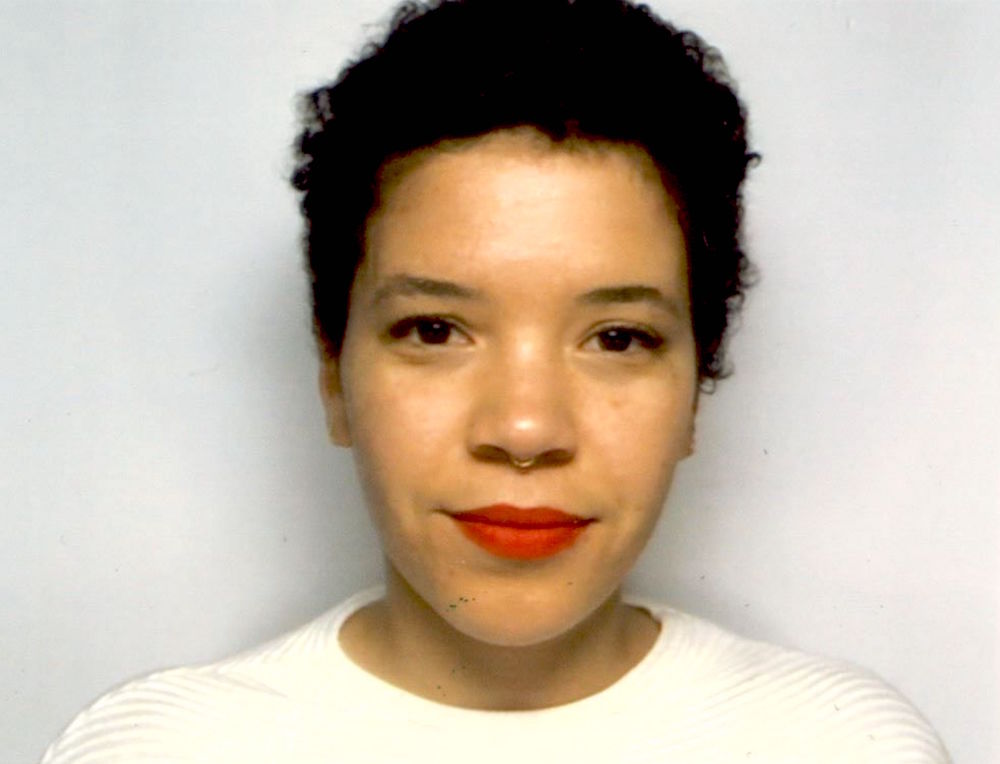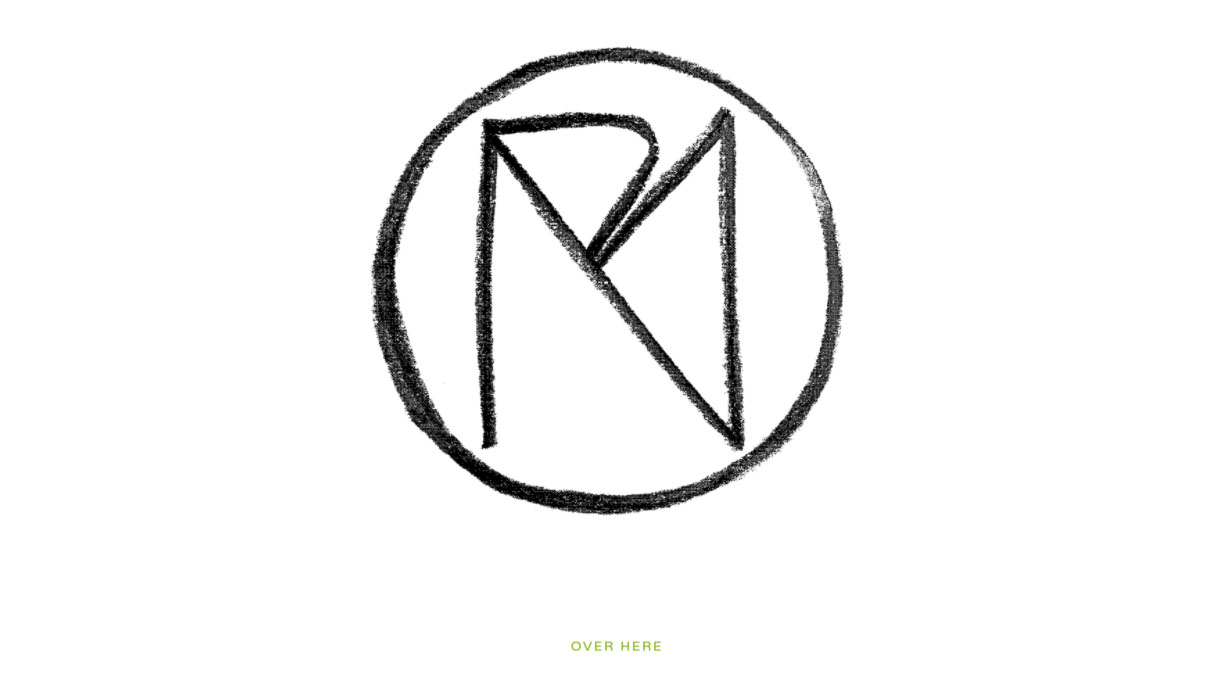Stroom Invest interviews / curator Nomaduma Masilela
Since the 1990s, the role and visibility of curators have increased significant. We talk to the young, independent curator Nomaduma Masilela about her vision on fulfilling that position. She was raised in Łódz and Los Angeles and is currently based in Berlin. For her, a curator is a mediator between institutions and artists and audiences. Someone who likes to place existing things in a different context, rather than produce something new. Her mixed roots and growing up in various places make her both look at the world with an open mind and sensitive to what is going on in society.

Indra Devriendt: Can you tell us your background?
Nomaduma Masilela: “I come from a rather international and immigrant family, so I have had quite a global perspective in my upbringing. I was born in Germany, to a Polish mother and a South African father. We lived in Germany and in Poland through my early childhood. In the nineties we moved to the United States, to Southern California, right after the fall of the Iron Curtain. The places where I grew up have deeply formed me. My curatorial and art historical upbringing was in New York City, where I spent nearly all my twenties. I studied Art History at Barnard College for my undergraduate studies and then at Columbia University for graduate studies. I was lucky enough to study with great art historians like Kellie Jones, Rosalyn Deutsche, Zoe Strother, Okwui Enwezor, Chika Okeke Agulu, Susan Vogel, Alex Alberro, Keith Moxey but also with specialists in other fields, such as Kim Hall and Hlonipha Mokoena. I worked with Tumelo Mosaka at the Brooklyn Museum, and Rashida Bumbray at The Kitchen, then Yasmil Raymond and Leah Dickerman at the Museum of Modern Art (MoMA), all in New York. And finally, my work as co-curator with Gabi Ngcobo, Yvette Mutumba, Thiago de Paula Souza, and Serubiri Moses for the 10th Berlin Biennale for Contemporary Art a little over two years ago was incredibly formative in my development as a curator.”
“At the same time, I want to point to the importance of my parents, who truly began my cultural formation from a very young age. I want to highlight my father, Dr. Ntongela Masilela, who very sadly passed away earlier this month. He was an internationally renowned scholar of South African intellectual history. He not only introduced me to the practices of scholarly and archival research, but also to a constant stream of sophisticated cultural references. He taught me the importance of really digging for stories that have been forgotten and that were never allowed or assumed. That the history that we’re being taught is reflective of everyone who was involved. I’m grateful for that upbringing. And it’s only in the past years that I’m fully realising the gravity and immense influence that this childhood cultural formation has had on me, both in my personal and professional life.”
You have lived in New York for a long time and have been living in Berlin for a few years now. What characterises the Berlin art scene?
“I feel like I’m only starting to get into the Berlin art scene, it’s not easy to name what precisely characterises it. I noticed there is much more State funding, which sometimes dictate the direction and interests of the overall season. But this also means that artists aren’t forced to work purely for profit or for more commercially minded interests. I think that commercial interests have changed the landscape of the Berlin art scene significantly. Unfortunately, with artists losing studio space at an incredible rate. Similarly, it must be hard for project spaces and smaller art institutions to keep up with these developments. This is regrettable, because those spaces make Berlin most exciting and characterise its art scene like ngbk (neue Gesellschaft fur Bildende Kunst), Savvy Contemporary, bibak, Oyoun, VERY Project space, and so many more.”
“I have been missing New York recently because of what is happening across the United States with the Black Lives Matter movement. People have been doing and sharing amazing work, the importance of how intersectional the discourse and activist have been, but also how devastating the ongoing violence and deaths are. The things that people are thinking and talking about, artists and curators and activists and lawyers, simply people across the board, bodes well for the reshaping of the role of art and institutions. It feels like the right moment for things to change.”

What are you currently working on?
“Currently I am freelance, which comes with its freedoms and precarities. I have been working with my colleague and collaborator Jeanette Gogol on developing a follow-up publication to Strange Attractors, a curatorial publication which I made for the 10th Berlin Biennale. While Strange Attractors was focused on using the mathematical concepts of fractals and chaos theory to examine questions of familial dissonance, this next edition focuses on astronomical phenomena and interstellar relations. Other projects are not yet public. But generally, the COVID-19 situation has pushed me to write and read more. I have been thinking of how to use the skills that I have developed as a curator in other media. As a person who is interested in how histories are narrated, produced, and re-enforced, film provides an incredibly medium for such investigations.”
Why did you become a curator?
“Much of the initial art history written about modern and contemporary art from Africa and the Diaspora were through exhibitions and their catalogues. It was through the persistent and brilliant work of curators and historians like Okwui Enwezor, Bisi Silva as well as their predecessors and contemporaries that the incredibly limited understanding of modern and contemporary art history, which was predominantly European or North American, was changed. So, in a lot of ways, exhibitions are vehicles for history writing, but also for questioning established narratives. An exhibition is an incredible format to present and examine the complicities and contradictions of histories and of any given topic in a physical space, and thus to engage people in such a way that it engenders questions and conversations which shake up dominant narratives. What I love about curatorial work is bringing people together through their ideas and works. Introducing artists to each other in the making of an exhibition, but also bringing the audience together when a certain space and possibly creating a certain affinity in that way. As a curator you assemble a group of works and positions which share some affinity and allow people to assemble around them. Changing how people engage within spaces by causing them to question themselves within it. I want to be in conversation with people who are thinking about the world in open and generous ways. In a similar way that I like bringing people together, I really enjoy the practice of assemblage. Rather than producing something new constantly, I’m aware of the limited resource of the earth. I like rethinking and reframing and recontextualising what already exists.”
When do you, as a curator, think that an exhibition has been successful?
“I think when people get changed by it, whether in the institution or by visiting. Or when the perspective of the curator, or the artists involved evolves as a result of the exhibition. Likewise, those who are influenced by the catalogue, the exhibition or an artwork they saw, even years later. When you feel there was a conversation or an evolution of a certain idea in a set of concerns that was developed together. That there is an engagement with the work and an attempt to understand what the artist or curator wanted the work to trigger.”
“One of the most influential texts I read as an undergraduate was by the British art historian Kobena Mercer. Mercer wrote a review of an exhibition of Robert Mapplethorpe’s photographs in Britain in the 1980s, and was incredibly critical of the ways in which his photographs fetishised the Black male body. It concerned a gay artist who photographed his close friends and lovers. Once published, he realised that his negative review benefited the conservative political agenda of the New Right which wanted to censor such work and silence same-sex love. Unsatisfied, he wrote a retraction in which he not only acknowledged his mistake. He had also overlooked the relationship between the artist and his subjects which allowed his writing to be put at the service of a political position. I think that taught me something important. It’s beautiful and important to acknowledge a mistake and correct it. But also, to know your own political position and to be wary of falling prey to oppressive powers. How can I work better to support those that I care about? It’s super apt for the current global struggles against oppression that we’re witnessing and hopefully taking part in, whether actively or through actions of solidarity.”
What is the main project you still want to realise?
“I would like to realise a more historical project, which centers around my dissertation topic. It centered on a youth led movement called ‘Set Setal’ in the late 1980s and early 1990s in Dakar, Senegal. Literally, ‘Set’ means clean and ‘Setal’, to clean up. Together, the two terms also refer to notions of order and ‘moral cleanliness’ in the face of the corrupt ruling class. Young people and artists organised and cleaned their neighborhoods and painted murals which reflected a changed mode of history writing and self-articulation. I spent quite a lot of time in Dakar conducting research. My aim is to make a project that can properly commemorate and reflect the energy and generosity of thought that the artists and writers and individuals in Senegal that I interviewed shared. It’s also a project which can be the most useful and generous for those who engage with it and those who were so instrumental in its development.”
What do you like most about your job?
“I like working with different types of people. I love studio visits, which is why I am excited to visit ‘The Invest Week’ in September. I think that there is much to learn and share in this exchange, and the possibility of developing a relationship, whether it comes to fruition years later in an exhibition or simply through a continued exchange of ideas. I have been skeptical of the powers of social media and online meeting platforms, but I start appreciating them through Black Lives Matter and the plethora of amazing information that people are sharing on platforms like Instagram and Twitter. People are able to organise themselves via such platforms. It has been generous to organise and participate in zoom talks. I’m still a bit wary of the personal information that we’re sharing but there’re ways to engage and curate them in order to connect people.”